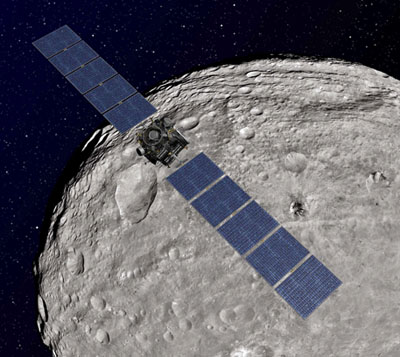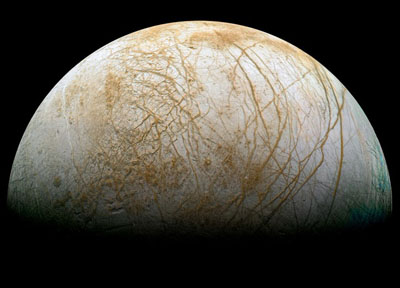home | internet service | web design | business directory | bulletin board | advertise | events calendar | contact | weather | cams

|
Exceptional Bear Fight Institute founder and director Thomas B. McCord, an upper Rendezvous resident, today (July 18) was awarded NASA’s Distinguished Public Service Medal in Washington, D.C., for his “exceptional and sustained” scientific achievements in planetary exploration. The remote infra-red sensing instrumentation technique he pioneered led to the modern instruments that discovered water on the Moon and is being used to determine the composition of minerals on other planetary bodies.
Physicist McCord, 74, is cited as a “world leader in conceiving, building and flying robotic satellite instruments to solar system objects,” according to NASA’s press release. The award, the highest recognition by NASA of scientific achievements by a non-government employee, previously has been given to such figures as astronomer Carl Sagan and science fiction author Robert Heinlein. “Dr. McCord developed and implemented the modern technique of reflectance spectroscopy using electronic detectors for remotely determining surface minerals from spacecraft,” the NASA statement said. The instrumentation he developed has helped explore such planetary bodies as the satellites of Jupiter, Saturn, the Moon, Mars, Vesta, Ceres, Titan and Europa. His work has contributed to our understanding of the origin and evolution of planetary bodies, according to NASA.  An artist rendition of the Dawn spacecraft orbiting Vesta. Instruments Thomas McCord designed are aboard the spacecraft and he is tracking real time data from them at his residence and workplace in the upper Rendezvous. Image courtesy NASA/JPL - Caltech An artist rendition of the Dawn spacecraft orbiting Vesta. Instruments Thomas McCord designed are aboard the spacecraft and he is tracking real time data from them at his residence and workplace in the upper Rendezvous. Image courtesy NASA/JPL - CaltechFor someone who grew up plowing fields with a mule in rural Pennsylvania, McCord said being honored for cutting-edge planetary exploration work was an “unexpected” development. “To me, it’s a big deal,” he told Grist. “It’s good company. I really appreciate whoever did the work to bring it about,” he said of the award. McCord moved on from mule farming to enlist in the U.S. Air Force at a time when universal military service was compulsory and decided to become a physicist while in the service. After graduate studies at Caltech, he worked at its Jet Propulsion Laboratory on NASA’s Apollo Moon mission and NASA’s unmanned deep space program. At the Massachusetts Institute of Technology he built the George R. Wallace Jr. Astronomical Observatory, still in use. And at the University of Hawai’i he renovated the Mauna Kea Observatory telescope, attaching his new remote sensing equipment to the telescope. “We built instruments, bolted them on the telescope, built data handling software and hardware, and published many, many papers. It was fun,” McCord recalls. And then, as NASA’s deep space exploration program took off, his instruments moved from ground-bound telescope platforms to spaceships. In 1972 McCord was issued the nation’s first patent for a digital camera when Bell Labs “was trying to build a picture phone.” He never activated the patent so he never profited from it. But he said he did profit from the government’s emphasis on science education in the aftermath of World War II, which produced a new generation of scientists. “I was fortunate to be in the right place at the right time and getting into this business at the beginning,” he said. McCord and his wife, Carol, moved to the upper Rendezvous above Winthrop full time in 2002 and established the Bear Fight Institute, a small planetary research center hosting scientists from around the world. From there, he’s tracking real-time information from his instruments aboard Dawn, a mission to Vesta and Ceres, via a secure server at the Jet Propulsion Laboratory in Pasadena, Ca., where he is a Visiting Distinguished Scientist.  McCord has been working to launch a mission to Europa, a moon of Jupiter suspected to have all the ingredients for life. This color image shows the icy surface of the distant moon as it might appear to the human eye. Image courtesy of NASA/JPL/Ted Stryk McCord has been working to launch a mission to Europa, a moon of Jupiter suspected to have all the ingredients for life. This color image shows the icy surface of the distant moon as it might appear to the human eye. Image courtesy of NASA/JPL/Ted StrykMcCord has his sights set on one more “flagship” NASA space mission: to the ocean—the one suspected to be on Europa, one of the moons orbiting Jupiter. “The Europa mission is my big dream,” he said. “It’s such a grand question: can life form in another place?” Europa is the one celestial body that we know has the ingredients to sustain life: energy, food, and liquid water, McCord said. “I think we’re virtually certain there is an ocean beneath the thin ocean crust.” The remote sensing evidence from the Galileo mission to Jupiter that flew past Europa many times suggests tidal action on Europa, he added. “We see salt deposits on the surface,” he said, and “We know from its density that it has to have a great deal of water.” What’s needed next is to send a remote sensing-equipped spacecraft to Europa to learn where the ocean ice crust is thinnest, said McCord. Once that’s determined, scientists will know where to land a robotic device on another, follow-up space flight. The robotic device would be used to drill into the ocean to search for signs of life, past or present, he said. “We ought to go look.” “I won’t be here for that,” added McCord, who has been working with teams of other scientists for 15 years in an attempt to get the Europa mission launched. Even though he will not live long enough to learn the answer to his “grand question” of whether there is, or was, life on Europa, McCord said it doesn’t bother him that he’ll never know. “To me, it’s exciting to work to start the mission. You have to enjoy the process, I guess.” The Europa mission has not been funded. Actually, McCord amended, it would have been funded by the conservative-dominated Congress. But the liberal Obama administration’s Office of Budget Management has refused to fund it. “Go figure,” said McCord. For more about the Bear Fight Institute see our previous story >> 7/18/2013 Comments
|
 Bear Fight Institute founder and director Thomas B. McCord. Photo by Solveig Torvik
Bear Fight Institute founder and director Thomas B. McCord. Photo by Solveig Torvik